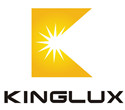Sports fans might notice some of the changes that are happening in the outdoor stadiums and arenas where their favorite teams compete. Older metal halide and high-pressure sodium lighting fixtures in those facilities are being retired in favor of new LED sport lighting. Fans can see new LED football lighting, for example, in the home stadiums of the National Football League’s Houston Texans and Arizona Cardinals. The NFL might be the highest-profile league to utilize LED football lighting, but universities and other public outdoor sports arenas are also jumping on the LED bandwagon. When the advantages of LED’s over traditional outdoor sports lighting are considered, it is easy to understand why LED football lighting is revolutionizing outdoor sports.
A typical professional or university outdoor football stadium hosts ten to fifteen football games per year. Football stadiums generate little or no revenue of they are not being used, and stadium operators need to find ways to maximize the usage of these facilities as well as to save operating costs in order to justify the existence of a stadium and the capital expenditures that were dedicated to build it. LED football lighting is a key component of solving this dilemma for a stadium operator.
Benefits of LED Football Lighting
LED football lighting is more durable and long-lasting than traditional metal halide or high-pressure sodium stadium lights. LED football lighting fixtures generate brighter and better quality light that gives professional athletes a better opportunity to see the action during their contests, which improves the overall quality of the athletic competition. Further. LED football lights consume less than half the electricity of traditional stadium lights, and require less maintenance and repair over their longer useful lifespans. This saves substantial operating costs and adds to the stadium operator’s bottom line. In most cases, the initial costs of installing LED football lighting can be recovered through operating costs savings in under two years.
Perhaps most significantly, newer generations of LED football lights are more versatile, with spectrum-tuning characteristics that allow changes in the nature and quality of light for different events that might be hosted at a football stadium, including concerts and conventions. Stadium operators can use LED football lights to expand the utility of a stadium beyond fifteen annual football games.
LED football lighting also helps to bring stadium managers into better alignment with demands for eco-friendly operations that reduce a facility’s carbon footprint. LED’s consume less electricity and place a lower load on generating plants. They include no materials that would create hazardous waste problems when they are discarded. They can also be more highly targeted to shed light onto playing surfaces and away from surrounding neighborhoods, which reduces problems with light pollution.
Other outdoor sporting venues are taking note of the advantages that LED football lighting offers to professional and university stadiums. The LED outdoor sports revolution is taking hold in municipal sports arenas, high schools, and minor league sports facilities to help facility operators everywhere to save money and to expand the scope of usage of their facilities.


